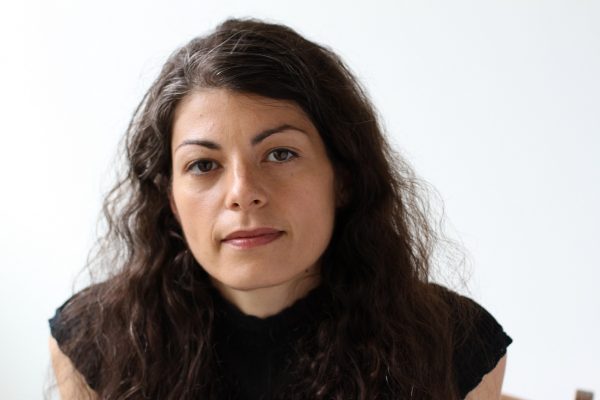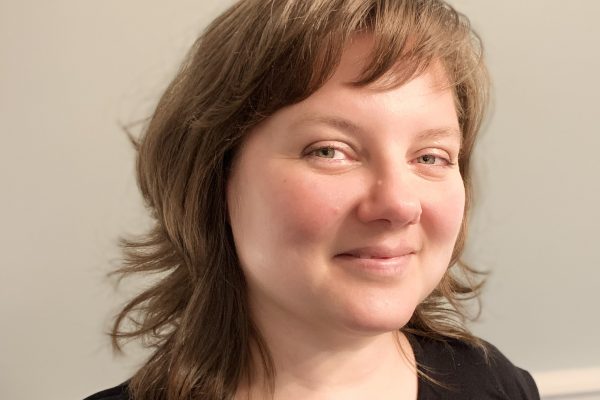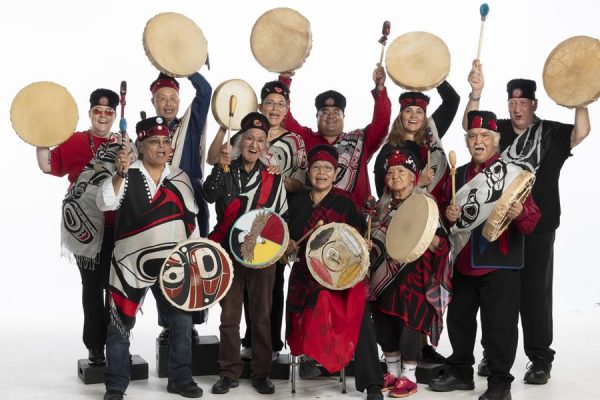This article was originally published in our Winter 2022 print issue.
Dance Media Group, publisher of The Dance Current, was incorporated as a non-profit in 2002 and became a registered charity in 2018. Like many organizations, that’s opened the door to greater fundraising opportunities through the ability to provide tax receipts and make appeals to a wider range of funders. This structure works well for us as a media organization. But we know that many artists and creators have complicated relationships with the non-profit model.
A defining feature of the non-profit structure is the board of directors, which governs the organization. Those organizations, particularly those with charitable status, also have access to more funding options and the ability to issue charitable tax receipts to those who donate to their work.
However, some complications with this structure include the level of control the artist may have over their work, the lack of diverse community voices that can be accessed and heard in decision-making processes and the coloniality of the non-profit structure itself, as a western capitalist model adopted from the corporate world.
Meredith Potter is the producer and manager of Peggy Baker Dance Projects, which is set to wind down, as the company describes, in 2023. The established contemporary dance company incorporated in 1996, and part of the reason for that wind-down is to free up resources within the dance ecosystem. Michael Caldwell recently joined the leadership team at Generator, an organization that fosters the growth of artists and producers through mentorship and education. Caldwell, while working with non-profits and artists who have incorporated, has chosen not to incorporate for his own artistic work. Kenji Maeda teaches cultural entrepreneurship at Simon Fraser University. His course centres the realities of working in the arts including strategic planning, business modelling and raising money. He is also the executive director of the Greater Vancouver Professional Theatre Alliance (GVPTA).
Along with Kallee Lins, The Dance Current’s publisher, I hosted a conversation between Potter, Caldwell and Maeda to unearth the complexities of the non-profit structure as it pertains to artists working in this day and age.
***
Amy Hull: So we’ll start with Meredith. Would you be able to speak to pathways to financial support and financial sustainability for an organization like the Peggy Baker Dance Projects?
Meredith Potter: OK, so Peggy started her solo dance company in 1990, when she got back from New York, but she didn’t incorporate until 1996. I’m not sure where in that time frame she became a client of the Dance Umbrella of Ontario, but that’s where I met her in 1999. When I began working with her then, her company was incorporated but not yet registered as a charity with the CRA. So I put the company through the process of becoming charitable. The charitable status had been pending in everybody’s mind for a really long time, and so the board had started to collect a core group of people around Peggy to prime them to be ready to go when the charitable application was approved and we could finally, after some delay, write charitable receipts. When the registration was approved, they sent their cheques and we were able to raise about $20,000, I think. Back in those days – I mean, it’s still a lot of money – but in 1999 it was a lot of money. [Laughs] From there, it’s been a constant growth trajectory for the size of her budget, which is, I think, attributable to two factors. One is the charitable part of things: funding from family foundations, private foundations, is limited to other charitable organizations. So funders such as the Metcalf Foundation, back in the day the Laidlaw Foundation, you know, really active family foundations in the Toronto scene like the Hal Jackman Foundation and the McLean Smits Family Foundation. We were able to put in applications to foundations to start to diversify our revenue streams and bring more private revenue into the corporation, alongside individual donations and eventually alongside corporate donations. BMO Financial Group has been a regular donor to the organization for about a decade now. So the charitable status definitely enabled a new focus in terms of what is sometimes called contributed revenue or private revenue streams. But then the other growth in the budget came from an operations perspective in terms of the company around 2010: transforming from what was principally a solo-based endeavour with Peggy as the principal dancer into a company that worked with small ensembles. So whilst we’ve never had a resident company of dancers, we have what we call our core ensemble of dancers who are engaged on a project by project basis. By virtue of having now multiple dancers, instead of just a single principal dancer, our budget grew with the scale and scope of our work. It culminated in a very large project that we began with Fall for Dance North with who we are in the dark [2019], which had seven dancers in it and two musicians onstage and was the largest production we’d ever done. Alongside all of that, budget growth is also growth in the organization’s core administrative structure, which has to adapt to the new scale at which the organization is working and to be the mechanism that raises those funds to be able to swing those projects into motion. So it’s all very integrated and interdependent, that kind of financial growth with also the growth of the organization structure and the administrative and producing expertise that is within the organization’s team.
AH: So this one is for Michael. I’m wondering if you might be able to speak to some options for artists that are not working within a proper non-profit structure.
Michael Caldwell: Personally, as an artist, I’ve elected not to incorporate in any kind of way. And that’s really been based on the kind of art that I make, and I think that’s where it starts. I think it’s about each individual artist or company or groups of artists to evaluate what kind of art they want to make. Who is their audience? Who are their stakeholders? And does it make sense to actually incorporate? Because for a lot of artists, the answer is no. For other artists, it’s absolutely. It depends also on the kind of trajectory of growth that you might want to have in certain kinds of ways. And growth, you know, we can talk about semantics and talk about each individual word, but I personally wasn’t interested in the kind of growth that led to massive amounts of touring and creating a structure around me to support my art. I was just really interested in the flexibility of making art when I wanted to, based on all the kinds of different things that I was doing in my life. That leads to sort of an answer to the question, which is around diversifying the kinds of activities that I was doing, tapping into all the different skill sets that I had to find different ways to stay within the dance sector and in the dance community, working in many different capacities and having that all feed and support the art that I was making. I think one of the answers in the past has also been this notion of collectives: independent artists collecting together for very specific projects that were for a very specific time. That has been a solution that I think has existed in the past and still is current. What you don’t get except through incorporating and through charitable status is that access to the family foundations, the kinds of individual donations that you can possibly receive that people can get charitable receipts for. Like, you definitely lose that. But what you gain is the flexibility to be able to really nimbly craft your own projects without this larger infrastructure. I think it is a benefit to some in that it allows you to be more responsive sometimes as well. So when the pandemic happened, I think that a lot of artists who were project to project, they weren’t on core funding. They could pivot really quickly to adapt to the ways that the community was working and what the demands were of the time. I think that’s a big benefit. So I don’t know if it, you know, I’m going to be really interested to see how you edit this, [Laughs] but I don’t think it really addresses the answer of, like, what are the financial stabilities that exist? Other than to say, if I can just speak personally, it’s about diversifying the career so that all the different sources and ways that I’m working are feeding into my artistic practice.
AH: That makes a lot of sense. Sometimes the answer is ‘I don’t know.’
MC: It just comes back to, What are you making? What is the art? And what best supports the art? Sometimes that’s not this, and it’s this and vice versa.
Kallee Lins: Michael, I’d love an example of one of your recent artistic projects and how that was supported.
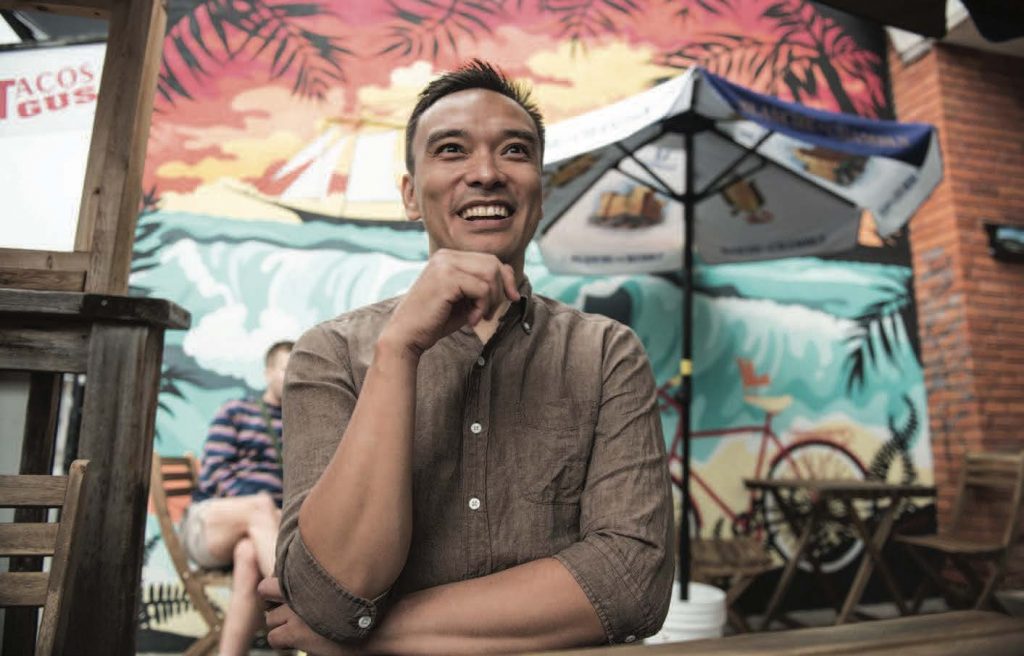
MC: A more tangible example will be the full-length production I did in 2017, Factory, which was presented at the Citadel. It was through grant funding through Toronto Arts Council and Canada Council. I had a really great relationship that I’ve leveraged over a long amount of time with the Citadel. I was the venue rental manager there at one point. I put in a lot of effort in my relationships, really caring for the bridges that I was building, really caring for the people that I was engaging with to create ways in which, as time goes on, when you have something to present or something to work on artistically, those relationships are already there for you. And that’s an important thing to note, and I think that really came into play with my work with Factory. I also had a relationship with pounds per square inch performance, Gerry Trentham, where I was an associate artist with the company. So some of the productions filtered through that space as well. Again, in not a super-defined way but definitely a support that was available to me. I hosted a workshop that was based on my movement practice that I’ve been developing for a number of years but that informed Factory. Funds from that workshop helped to fund the work itself. So these innovative ways of trying to have different value-adds that are not only about raising money but connecting with community, sharing your practice, those are really valuable to consider ways of financially funding your work.
The strength of your work is almost as strong as the community you cultivate.
Caldwell
KL: Awesome. Thanks so much, Michael. That’s something that Amy and I hadn’t actually talked about when we were thinking through the questions: seeing a lot of those visiting artists popping up, a lot of that interplay between independent artists and organizations that do have more core funding as well. So a lot of interesting things, a lot of interesting relationships like that.
MC: If I may, I just want to say one more thing. The strength of your work is almost as strong as the community you cultivate, I would say. And I think that goes for Peggy Baker Dance Projects as well. It’s about the people you keep around you or that you engage with or that are in your circle. And whether that’s a board, an audience, other dancers or other artists, that is your collateral. That is the important idea because the financial is financial, I have to say, but at the same time, it’s only as strong as the people around you.
AH: Thank you for that. All right, we’re going to move on to Kenji now. Thinking about teaching cultural entrepreneurship, what does it look like for artists moving into this type of structure? What do they need to do? What kind of work are they taking on when they’re like, ‘OK, it’s time to incorporate’?
Kenji Maeda: I teach at Simon Fraser University. It’s a cultural entrepreneurship program, so some of them want to be working artists, and some of them want to create organizations or institutions or companies. And the thing that we talk about a lot is that you need to know what you want to do first. And then you think about legal structure, only as a way to leverage being able to do the work. Sometimes it’s incorporating into a formal corporation. Maybe it’s a non-profit, maybe you want to be a charity, sure, but those are longer-term strategies. The key question is around, How much agency do you want to have as an artist? Many people are OK working with different companies and not being the person that creates the work, creates the structures to make the work happen, because that’s not their wheelhouse. Not everybody wants to deal with marketing and administration and finding the money. I think that the key thing is around partnerships. Like, who can you leverage within the community to then get donations through the secondary organization? Or you get the sponsorships through the secondary organization. And I think that oftentimes artists, cultural workers, think about the end goal, which is the feasibility, which is always important. But feasibility as a long-term strategy isn’t necessarily the thing to strive for. Sometimes the ideas that we want to create as an artist and as workers actually have a finite amount of time. It’s maybe a one-year project; maybe it’s a three-year project. There are only certain things that actually have a 10-year trajectory, or multi-decade trajectory, and we just need to be realistic around, Is that actually our goal? And if so, then we need to create the infrastructure around that. Even within the theatre community, we talk a lot about, How do you create a project? You can make a collective, you can do a show, you can be in a Fringe show. You don’t need to be legally incorporated in any way. And that’s OK. It just gets more complicated if you want to create the board structure; it’s really about liability. We just need to navigate the systems. And how do we navigate the systems to reduce risk, to reduce liability but also to share responsibility?
KL: Kenji, you just said something really interesting around a board and that legal structure is really about liability. I’m wondering if you could clarify that a little bit because I think a lot of artists feel like there’s a validity in that, that to feel like you’ve really arrived as an artist, you need to have this organization around you, almost as a status piece. But I wonder if you could clarify what that really means from a purely liability standpoint.
KM: Well, I see Michael wrote in the chat ‘also accountability.’ When I think about liability and accountability within an organization, once you have a board, you are ultimately responsible to the board. And then the board is responsible to the society, which may include, quote-unquote, membership, or it’s actually a larger community because we receive public funds. I feel like there’s a false perception that being a society makes you more valid or makes the quality of the work better. Filmmakers, as one example, are often for-profit entities, because as a director, you want to incorporate to create a safety around liability when you create larger projects, and then you work from one project to another, and they make great work. And that’s totally fine. I think that once artists go into creating a society, I think one big question is around, Does the society actually enhance the work that you’re doing? If it doesn’t, then that’s going to be the biggest issue. And once you create the society, how to close the society is a big question, right? Nobody wants to close the society. What’s the succession plan look like? I think that having a society that only exists for one person’s artistry is totally fine. But you just need to be very clear that that’s the plan and that you want to close it after the founder leaves or the founder wants to do something else.
AH: You gave us the perfect segue into the next section of our conversation, but you also brought up something. I don’t know if we should address it now, but Peggy Baker Dance Projects is winding down.
KL: Meredith, if you wouldn’t mind commenting on that, I think that’s really crucial for this conversation. I feel like there are a lot of organizations that fall into the trap of perpetuating themselves purely for the sake of perpetuating themselves. I was really pleased to see the way that Peggy Baker Dance Projects put that announcement out, about recognizing the importance of succession not only within an organization but at the community level.
MP: I’m happy to speak about it. I think Kenji’s absolutely right. There are certain enterprises that have an obvious use-by date. But when you’re an independent artist, that might not be as clear-cut. There are larger questions around, Is my practice such that the longevity around it merits thinking about strategically going down the incorporation path with a view to more robust financial opportunities, balanced against larger governance and administrative burden? Peggy started her independent dance career at the age of 38, and when she started Peggy Baker Solo Dance, she wasn’t incorporated; she just made up that title. She progressed as a sole proprietorship with all of the revenue associated with her practice going into her personal income. Then she went for grants as an individual and paid all of her collaborating artists, literally from her own chequing account. That’s how you operate when you’re not incorporated; it’s all involved in your income tax, and things can get a bit complicated. I think she started that way because – she’s pretty upfront – she was 38 at the time. Back in those days, everybody was like, ‘Wow, you’re kind of old to be a dancer,’ right? She was thinking that she was in a wind-down mode, going from being in company structures – Dancemakers, then Lar Lubovitch, then the White Oak Dance Project – as a company dancer, winding down to, like, ‘I’m going to focus now on this solo dance interest that I have as I kind of, like, go into my twilight years as a dancer.’ And that didn’t happen at all. She found a new lease of her dance life. And she found it really rich and exciting and found a lot of success in the work that she was making and that she was commissioning from other choreographers to make specifically on and for her. So she then looked at the success that she was having and then predicted forward: ‘Is this something that I want to do? And if it is, what structure do I need to have around me to do that?’ That’s why the incorporation came in 1996, and then all of the burgeoning gross, in terms of the budget and the infrastructure that went along with that. So then in 2020, we were looking at the systemic racism and the systemic barriers and oppression that dance artists who are not white and able-bodied have been talking about for a really long time. And yet, folks in the mainstream haven’t been listening. Finally, we listened and we heard. Peggy responded in a way that I think is very genuine, like, ‘I’ve had a really good run, and it’s time for other people to have the same kind of opportunities that were afforded to me as an artist.’ She took the step to say, ‘I’m going to shut down my company.’ And I would like to take this opportunity to really clarify this: It’s the company that’s shutting down. Peggy Baker the person is not retiring. It’s the organization that is in receipt of the public moneys that is going to be dissolved. All the money that that organization collects from the public purse – the TAC, the OAC and the Canada Council – it’s Peggy’s desire that that money goes back into the pot and gets redistributed to new and existing members of the dance milieu that haven’t had access, that that money is freed up for other people to have new opportunities. That is the core reason behind the decision to shut the company down. It’s not about Peggy retiring. I think it’s really interesting and it’s coming at a really interesting time. I don’t know if any of you guys have read the Metcalf white paper that was written by their innovation fellow David Maggs called Art and the World After This. And David talks a lot about our obsessive use of ecological metaphors when we talk about the arts ecology. He points out that one of the stark obvious areas of the environment is death and decay and how the death, decay and composting functions in an environment are the processes that actually allow that environment to keep regenerating, to keep growing and to keep evolving. So it seems to me this decision Peggy arrived at is really honing into this idea that all of our structures, whether we’re incorporated or whether we’re working as independent artists, as Michael said, we’re all part of a larger arts ecology that is really reliant on turnover to keep new ideas coming into the milieu, into the art form, and to get new people interested and to share the opportunities that we have in our world.
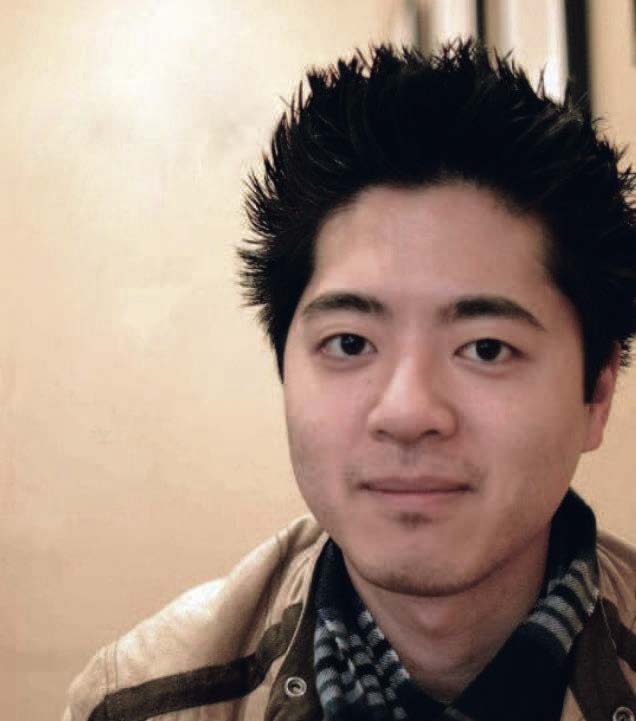
AH: So bouncing off of Kenji’s other segue now, I wanted to talk about some of the tensions within the structure of the non-profit.
KL: Some of the feedback and criticism of that structure that we’ve heard from artists coming from marginalized communities and feeling like – well, Amy, you say it so well, in terms of the perpetuation of colonial structures through that corporate framework that is imposed on us. So go for it, Michael, you were super keen.
MC: I mean, we can get into this a lot. This actually ties in to a governance project that’s happening at Generator right now that’s near completion. In 2022, there will be moments of sharing and engagement about what those learnings have been. But it’s really a project that has been put forward with the company collaborators – Shakespeare in the Ruff and the Toronto Dance Community Love-In – to really dive into the questions around governance. What is a board? What are advisors? What are committees? Why do we hang on to these colonial structures where we’re asking individuals to volunteer their time and have little connection to the programming of the organization, to be our bosses in non-profit arts sector management? Why are we creating environments where there’s a disconnect with the ways that we want to work and the values that we put in our artmaking, which then aren’t reflected in the way that we’re administering that art? Those are the questions that are happening and especially in the context of the pandemic, in context with the racial reckoning that happened in summer 2020. Why are we beholden to these structures and being, for some, mind you, forced into ways of working that really go against the way that we want to make art? So that’s the crux of it. I think that’s the question that’s being asked, and what we’re demanding from boards and advisors in different structures is really coming into conflict in ways that I think will continue to emerge over the course of the next amount of time, a few years, whatever it may be.
The key question is around, How much agency do you want to have as an artist?
Maeda
KM: So one of the things that we have been working on at the GVPTA is we instituted a community council for our organization. As an art service organization, in particular, it’s been really important to be more in connection with community because we are supposed to be the representative for the broader theatre community. One of those big gaps over the many years of the organization’s existence has been that we don’t actually have representation of all of the theatre community. And the only way you do that is to engage in those conversations. What we’re structurally playing with is three circles, like a Venn diagram, where it’s the community council, the board and the staff. And we’re a relatively small organization. Nobody’s full time; we have four part-time staff. And then we have, currently, five board members and eight community council members. The community council has been in existence since January 2021. And the reason we brought them into the organization is because we can’t pay our board members to participate in governance or to give direction to the organization. So that was one of the goals: we would pay our community council members to give us guidance around governance and programming and activities. That has been a really great opportunity for us to build those relationships with the community and fill those gaps with folks who often don’t have the time to be on the volunteer board or may not have the level of experience to be formally doing governance or the fiduciary kind of responsibility that is structurally embedded inside the society, or like a B.C. non-profit society. And we’re at a point where we are developing with them, What can the future of a community council look like? How do we expand the expertise and experience of the eight that we currently have to include more people while also considering that we have budget constraints in terms of we can’t invite a 20-person council and have eight meetings a year. It’s just too much for us. So how do we do that eloquently and elegantly with respect and trust over the next number of years? And one of the big things that we’ve been very clear about is that we haven’t actually told the community who’s on the community council because we didn’t want to leverage the identities of these eight people as patting ourselves on the back to say, ‘Look how good we are. We are engaging in community.’ So I think about this in terms of relevance for our organizations and collectives or whoever else inside the existing structure that we must have in order to get those grants, in order to be able to decentralize the power, to decentralize decision-making and to, in some ways, redistribute some of the funds back into the community that is under the umbrella of GVPTA, but it really is about the community.
MC: Sorry, I have to jump in. [Laughs] What you brought forward, Kenji, I think is the crux of it. How do you bring more voices into the space? And what is the composition of those voices? Who are the people you’re inviting in, right? To go back to Generator, this strategic advisor program started early spring 2021. And it was a way to actually pay people for their knowledge and experience and individuals that had a closer relationship to the actual programming, the actual values of the organization. Not to say that the board doesn’t have a connection to the values; it’s not about that, but it’s about people that are on the ground working that are having specific connections to the communities that the organization serves. And that is such a big thing. What leads to the disconnect with these colonial board structures that, you know, to be frank, a lot of boards are filled with white cisgender men, even in the arts. That is just the reality. So how do we fight against the systems that have kept us in this model for so long? And how do we innovate with what Kenji is doing, with what Generator is doing, with what lots of organizations are doing, to get to a place where we can really make those demands of government. [Laughs]
AH: That is funky and fresh, I have to say. That was so cool to hear. I just want to ask Meredith if you have anything to add?
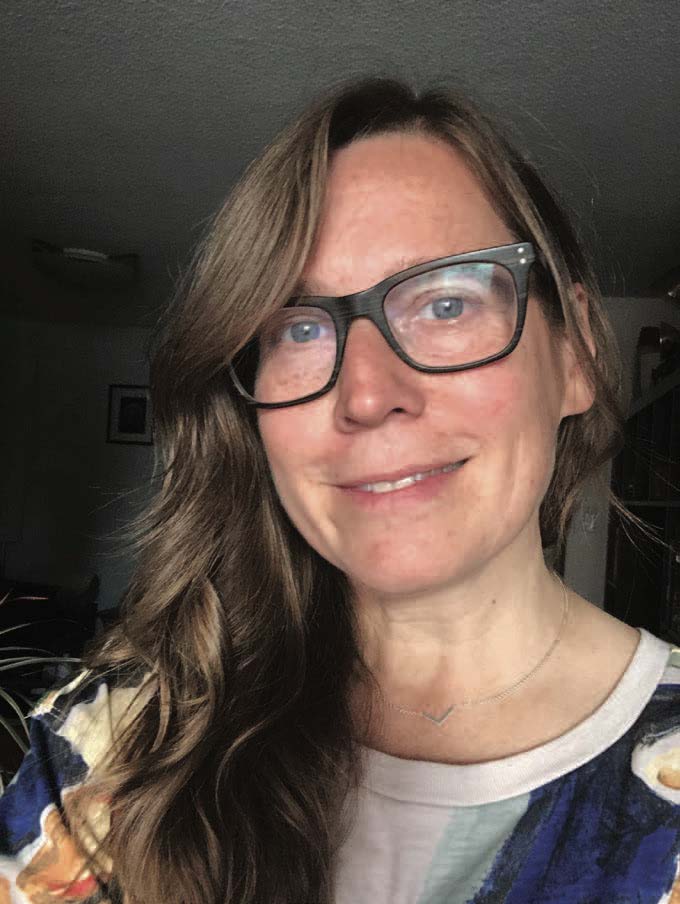
MP: I can talk about how you can try and innovate within the constraints of corporations if that’s of use. One of the lessons that I learned from people who are much smarter than I am at art sectorresearch, Jane Marsland and Anne Dunning, is that within organizations, rather than seeking to meet some kind of arbitrary best practice thing, sometimes it’s more important to actually find an internal logic that speaks to the core of the values and the objectives at the heart of the organization that are really important. In this moment – as the pandemic is raging on, and we are going through the disruptions of technology and climate crisis, and that we’re trying to respond to this racial reckoning movement that has been so long in coming for mainstream organizations to actually respond to it meaningfully – in amongst all that, I think a lot of organizations are actually falling into an imperative of finding an internal logic of how we can reconcile what we’re doing with all of these very large issues that are in the external environment. It’s manifesting itself in lots of different ways: in how are we comprising boards? How are we approaching policy-making? I’ve done some really interesting policy work with Peggy and my other client company, Volcano, in terms of anti-violence and anti-harassment, in ways that I would never have approached doing that work prior to the pandemic and prior to the social justice movement. I think it’s easy to look at the corporate structure as an additional level of administration, overhead governance, oversight, all of those words that feel like they’re bearing down on you and removing the agency to do anything. You can also look at it from a different perspective and think about, How can we innovate within the structure? Which is a totally colonial white supremacist structure that is very paternal, and is a kind of a holdover from the corporate sector, and is not super effective for many artists and organizations. And yet we keep on trying to barrel through. One of the ways is going to that internal logic place, and I think the other way, which is what Michael talked about, is about using your governance structure as accountability to the community who you serve. I think it’s a thread that’s run through a lot of the work that I’ve done with organizations around looking at who sits on the board, and why. I think one of the major pitfalls that people think about when they incorporate and decide who should go on their board is like, ‘Oh, we should get a lawyer, we should get somebody who’s got expertise in marketing, we should get an accountant.’ Like, ‘We need all this business expertise to help us run our business.’ If the people who we select have those skills, great. But in fact, the people that you want to sit on your board are the monster fans of the work that you do. They are the people who are going to be the allies for you out in the community. They are the people who are going to bring their friends and family and people in their orbits into the orbit of your work in your company. They’re the people who are going to be actually doing the work and putting in the hours and feeling great about it because they feel a level of involvement in your work. They love it, and they love you as the artist. They’re going to help you achieve your goals from that passion that they have, not because they have a law degree, not because they also sit on a bunch of other boards with other people with great financial capacity to give. It’s not necessarily about that. It’s about, Who are the people that you need around you to give you support? Those are the people that I think are the most important, the people who believe in what you’re doing. That is job number one for board members: they must believe in what you’re doing and have passion for it.
The people that you want to sit on your board are the monster fans of the work that you do.
Potter
AH: So I realize we’re running out of time. What do you want to tell to artists that want to achieve funding sustainability these days? What do you want them to take away from this conversation and move forward with?
MP: I can just reiterate what I already said, which is tailor it to you and what you’re doing. Understand that there is no one answer. There is no one single path. But surround yourself with people who believe in what you do, and let them help you.
MC: I think taking a moment to really define and understand what your core values are, then leading with those values as you determine how you wish to organize the community of individuals and the overall framework of the art of what’s around you. That includes people, financial resources and all the things we’ve talked about.
KM: I think one of the key pieces is that we often have a perception of how the system works and what is required within the system, and it’s actually wrong. Thinking that non-profit societies work in a particular way or boards work in a particular way, that you must have Robert’s Rules of Order, that you must meet every month, is not actually true. I mean, you need to look at your provincial societies act or whatever it is. But we need to unlearn what we’ve been taught and the expectations of what the structures look like. And so that is not just about boards but around everything. And I think if we start there, it will liberate artists. It will liberate the sector in a way that people haven’t been able to in the last decade or much longer than that.
This conversation has been condensed and edited for clarity.
Amy Hull was The Dance Current’s Winter 2022 issue guest editor.
Sommaire
Le Groupe Danse Média, éditeur du Dance Current, a été incorporé comme organisme à but non lucratif en 2002, et est devenu un organisme de bienfaisance enregistré en 2018. Comme pour de nombreux organismes, cela nous a permis d’améliorer nos résultats de levées de fonds, car nous sommes en mesure d’offrir des reçus aux fins de l’impôt et de nous adresser à un plus grand bassin de bailleurs de fonds. Le statut caritatif nous convient à titre d’organisme médiatique. Mais nous savons que bien des artistes et créateur·rices ont des relations compliquées avec la structure de l’OBNL. Parmi les difficultés, il y a le contrôle de l’artiste sur sa pratique, l’absence d’accès à diverses voix de la communauté dans les processus décisionnels et la nature colonialiste de la structure même. L’OBNL est un modèle capitaliste occidental, adopté du monde des affaires. Amy Hull, directrice de rédaction invitée, engage une conversation entre Meredith Potter, productrice et directrice administrative de Peggy Baker Dance Projects, une compagnie de danse contemporaine incorporée en 1996 ; Michael Caldwell, artiste qui a choisi de ne pas s’incorporer pour son travail artistique ; et Kenji Maeda, qui enseigne l’entrepreneuriat culturel à l’Université Simon Fraser. Ces professionnel·les en culture se penchent sur les complexités de l’OBNL et proposent d’autres pistes pour les artistes.
Dance Media Group strengthens the dance sector through dialogue. Can you help us sustain national, accessible dance coverage? Your contribution supports writers, illustrators, photographers and dancers as they tell their own stories. Dance Media Group is a charitable non-profit organization publishing The Dance Current in print and online.

Tagged:

